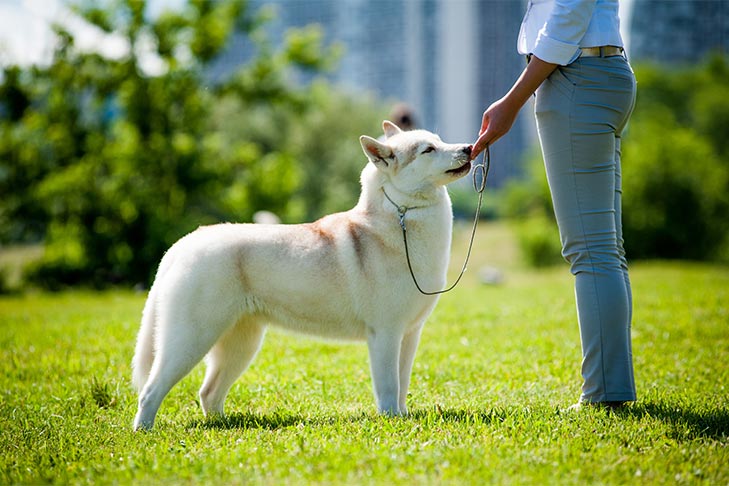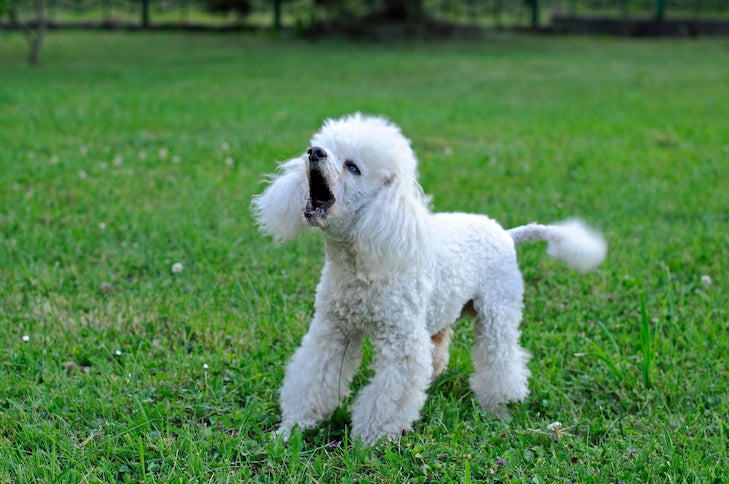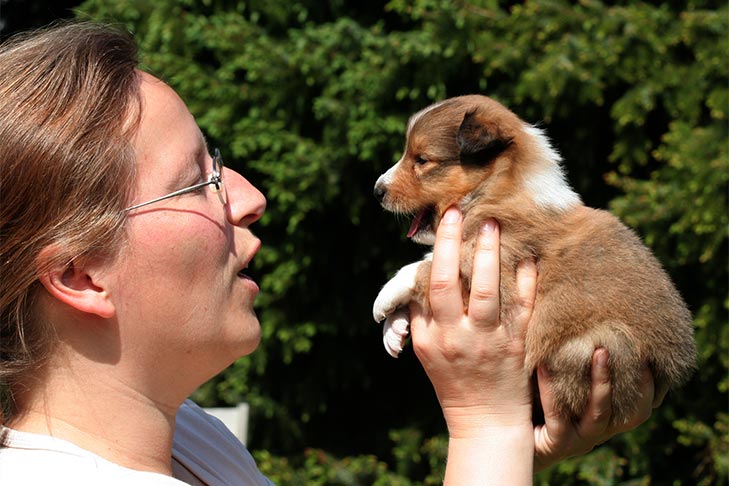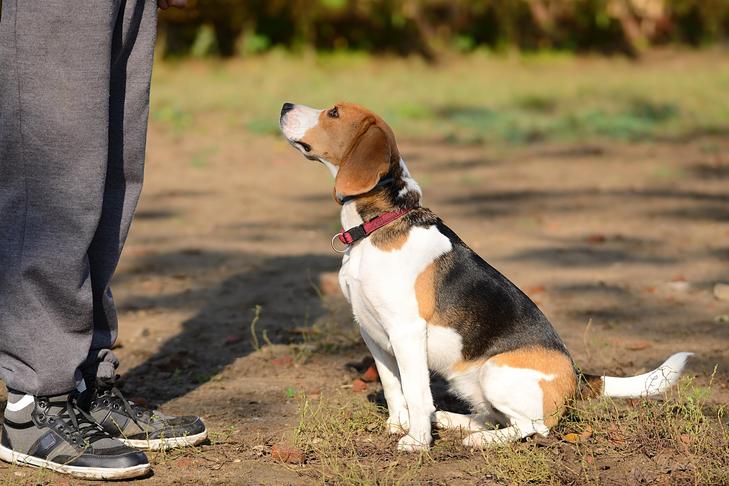
Aggression in Canine: Indicators, Indicators, Cures
[ad_1]
Canine aggression is a extreme and doubtlessly dangerous habits. The snapping, snarling, lunging, and barking are inconceivable to ignore and the very final thing it is advisable to see in your canine. It’s terribly traumatic to private a canine that reveals these behaviors. Aggression may erode the dog-human bond, and sometimes ends in isolating the canine from people and completely different animals. Nonetheless although aggression could also be simple to acknowledge, it could be extra sturdy to stipulate. What’s canine aggression exactly, and what is the motivation behind it?
Be taught on to increased understand your canine’s aggressive habits. The info will ease your emotional burden, make you a stronger advocate in your canine, and make it simpler to coach your canine increased strategies to handle.
What Is Canine Aggression?
Canine aggression is normally an “I do comprehend it as soon as I see it” type of habits. Nonetheless, the definition can differ according to who you ask. An ethologist could say aggressive habits is habits directed in the direction of the elimination of opponents. You’ll be able to even label it as any harmful or threatening habits utilized by a canine.
Canine aggression educated and licensed canine habits advisor Michael Shikashio, CDBC, likes to simplify points by specializing within the carry out. “I define aggression as habits used to increase distance from or eliminate a provocative stimulus or threat,” he explains. Normally these behaviors are utilized by canine to steer clear of an escalation of battle, enhance distance from a purpose, or set off harm to the purpose.
In several phrases, the canine exhibiting aggressive habits wishes additional area even when they should assault the chance to get it. It’s not robust canine play, though people typically wrestle to inform aside collaborating in from canine combating. It’s moreover completely completely different from predation, the place the aim is to get nearer until the canine can catch and eat the prey.
When to Get Help With Canine Aggression
Canine aggression is hard to take care of with out expert help. First, safety is your fundamental consideration. Second, it’s emotionally charged, which could make it troublesome in an effort to assess the situation. For example, are you stressing your canine collectively along with your actions, or are you missing early warning indicators?. Administration and habits modification methods must be suited to the underlying set off. Lastly, the additional your canine practices aggressive habits, the extra sturdy it’s going to be to range.
Search the help of educated on the primary sign of aggressive habits. Really, most aggression is pushed by concern, so intervening early if in case you’ve got a fearful canine is best. Don’t sit up for aggression to escalate to a chew or assault. A veterinary behaviorist, animal behaviorist, licensed habits advisor, or expert canine coach with experience coping with aggression can prepare you administration methods, make it simpler to determine your canine’s triggers, and develop a treatment plan to help your canine cope increased with these triggers.
Take away the Emotion if Your Canine Shows Aggressive Habits
Understanding aggression as distance-increasing habits takes a number of of the emotional baggage away. Reasonably than fascinated about phrases like “harm” and “violence,” take into consideration your canine’s need for home and safety. They want to defend themselves or what they consider to be their property from one factor or any person they perceive as a threat.
It’s important to take into account that aggression isn’t an irregular habits for canine. Given one of the best circumstances, every canine is ready to aggression, merely as every particular person is. Subsequently, Shikashio warns in the direction of labeling your canine as aggressive. He says it is advisable to describe the habits as aggressive instead of describing the canine as aggressive. After all, your canine isn’t aggressive frequently. There are explicit circumstances that set off aggressive habits.
What Causes Canine Aggression?
Fear is the first rationalization for aggressive habits in canine. For example, a canine that is afraid of strangers would possibly take into consideration a provide particular person on the door a threat and, subsequently, assault. Nonetheless canine can exhibit aggressive habits for numerous completely different causes, along with:
- Ache: the canine defends in the direction of contact or movement which will intensify that ache
- Helpful useful resource guarding: the canine protects objects they consider priceless, like bones or the meals bowl
- Guarding territory: the canine defends what they see as their space, similar to the yard
- Security: the canine guards a human in the direction of a perceived threat, or a mother canine defends her puppies
The necessary factor side linking all these circumstances is the canine feels unsafe or threatened and wishes one factor or any person to go away.
Present evaluation throughout the journal Scientific Experiences helps the idea that concern is a necessary side in canine aggression. After accumulating proprietor questionnaires for over 9,000 purebred canine, the authors found that canine exhibiting aggressive habits had been additional usually male, small in dimension, the proprietor’s first canine, the one canine throughout the family, and fearful. Really, extraordinarily fearful canine had been larger than 5 cases likelier to exhibit aggressive habits than non-fearful canine.
The study moreover found that the chance of aggressive habits elevated with age and differed between breeds. Powerful Collies, Toy Poodles, Miniature Poodles, and Miniature Schnauzers had the easiest odds of aggressive habits whereas Labrador Retrievers, Golden Retrievers, and Lapponian Herders had the underside odds. Apparently, Staffordshire Bull Terriers, a breed usually stereotyped or targeted by breed-specific legal guidelines, had low odds of aggressive habits throughout the study.
Completely completely different breeds tending to have completely completely different temperaments would possibly partly make clear breed variations in aggressive habits. That’s ensuing from generations of selective breeding for particular qualities, a number of of which embody aggression used for a operate. Think about livestock guarding canine, security canine, police canine, and navy canine—we’ve chosen for breeds used for these capabilities to point out aggression in certain circumstances. Subsequently, Shikashio takes a canine’s breed into consideration, because it might indicate a greater chance of aggression. Nonetheless, he believes each canine is unique.
Further importantly, he moreover appears on the actual individual canine’s underlying motivations and emotions, akin to concern, rage, anger, frustration, stress, anxiousness, and arousal. He says these can act as gasoline in a gas can, and the additional gasoline throughout the can, the additional seemingly a set off will act as a match, igniting an explosion. For example, in a canine that guards their meals bowl, the gas can might presumably be fueled by the canine’s hunger, a juicy steak throughout the bowl pretty than kibble, strangers throughout the residence, and a painful flare-up of arthritis. The match, or set off, might presumably be a person reaching for the bowl whereas the canine stays to be consuming. With all of those circumstances fueling the situation, the canine is additional liable to react aggressively as quickly as triggered. Subsequently, it’s important to take a look at what’s motivating the canine. The outward indicators of aggression are all indicators of the underlying problem. It’s the causes, like ache and concern, that must be addressed first.
Recognizing Early Warning Indicators of Canine Aggression
Is there a choice to predict aggressive canine habits sooner than it occurs? Most of the time, certain. Shikashio makes use of a teapot analogy. When a teapot on the vary begins to boil, the whistle goes off. That’s the canine reacting aggressively. Nonetheless sooner than that whistle, when the teapot stays to be getting warmth, do you have to hear fastidiously, there are little crackles. These crackles are the early warning indicators. “If we focus,” he explains, “then we’re in a position to pull the pot off the vary sooner than there’s even any hazard of getting burned.”
So how do you acknowledge the warning indicators of aggression? By listening to your canine’s physique language, habits, and vocalizations. These are how canine discuss that they actually really feel uncomfortable, threatened, or unsafe. For example, one trigger canine would possibly growl is to tell others to once more off. It’s a warning sign—your canine is burdened and, as such, it is advisable to in no way punish growling habits. Warning behaviors like growling inform you that the current situation is larger than your canine can take care of—the crackles of the kettle—so it’s time in an effort to step in and ease your canine’s discomfort sooner than the situation escalates.
Canine displaying indicators of stress don’t on a regular basis escalate to aggression. Nonetheless it’s important to respect what your canine is talking, so you could intervene to help them actually really feel protected and cease them from feeling the need to ramp up their habits. The earlier you acknowledge what’s occurring, sooner than your canine should growl, as an illustration, the upper you could advocate in your canine. Listed below are some indicators to take a look at for:
- Head flip: the canine appears away by turning their head
- Whale eye: the canine appears away with their eyes and subsequently the whites of the eyes current
- Freezing: the canine goes nonetheless
- Tail flagging: the canine’s tail is held extreme and waved stiffly forwards and backwards
- Tucked tail: the canine’s tail is held down between the legs
- Lip licking: the canine licks their lips unrelated to consuming or consuming
Nonetheless Shikashio notes that every canine is completely completely different, so it is worthwhile to know your particular person canine’s distinctive indicators. “Not every canine goes to bear yawning, lip licking, freezing, all these typical lower-level indicators that we’d see, so finding out what an individual canine does is so helpful in predicting if an aggressive response goes to happen,” he says.
How Do You Cope with Aggression in Canine?
Not at all punish aggressive habits. Yelling at your canine or bodily confronting them will solely exacerbate the situation and might result in further aggression akin to biting. It’s merely not protected. Nonetheless merely as importantly, it gained’t help your canine actually really feel increased in regards to the situation. Really, they’ll be additional liable to react aggressively subsequent time spherical. The an identical goes for growling and each different warning sign. Respect what your canine is telling you and empathize with their emotions. Attain out to a habits expert for analysis and progress of a habits modification program.
There are quite a lot of strategies to change aggressive canine habits. A habits expert will make it simpler to find one of the best strategy in your particular canine. Nonetheless, Shikashio says the overwhelming majority of the time, desensitization and counterconditioning are helpful. That’s on account of desensitization contains usually exposing a canine to their set off at a distance and at low ranges of depth. Then, counterconditioning modifications a canine’s damaging affiliation of the set off to a optimistic affiliation. Shikashio describes the strategy as a “take care of event” at any time when the canine sees their set off at a distance. “Doesn’t matter what you’re doing for habits – you could check out the issue, you could check out the sky, you could sniff the underside – nevertheless the treats are going to keep up occurring whereas this issue is throughout the setting, 100 yards away.”
Counterconditioning contains classical conditioning or finding out the affiliation between events. Nonetheless Shikashio likes to include operant conditioning in his treatment plans, too. Operant conditioning is the place the canine learns the outcomes of their habits. Using a means referred to as differential reinforcement, Shikashio has his purchasers mark and reward their canine throughout the presence of the purpose for doing a habits that isn’t aggressive, akin to wanting on the purpose or going to their mattress. This teaches the canine an alternate strategy of behaving whereas moreover developing a optimistic affiliation with the purpose.
Habits Adjustment Teaching (BAT) for Canine Aggression
There are completely different methods for modifying aggression, akin to Habits Adjustment Teaching (BAT), which was developed by Grisha Stewart, MA, CPDT-KA, KPACTP, and Constructional Aggression Treatment (CAT), which was developed by Kellie Snider, MS. In case your canine is exhibiting aggressive habits, or is simply displaying indicators of concern or stress, it’s necessary to get help from educated. Aggressive habits could also be exceedingly dangerous and locations you and your canine in peril. Educated could provide you with guidance about what to do, do it, when to do it, and deal with setbacks.
While you’re engaged on modifying your canine’s aggression, it’s important to deal with your canine and their setting to cut back any alternate options they should apply. Every time your canine practices aggressive habits and can get the desired remaining outcome — whether or not or not that’s your hand retreating from the meals bowl or a stranger strolling away from the door — it reinforces they should protect repeating it. Shikashio explains that if aggression works to make a scary issue go away, the canine goes to take into account that and go for that subsequent time. “On account of while you think about it, safety is additional important than something.”
Plus, each time your canine experiences their aggression triggers, their stress ranges enhance, making it additional seemingly they’ll escalate from warning indicators like freezing or tail tucking to aggressive behaviors like snarling, snapping, and biting. So, as you are employed on habits modification strategies to cut back your canine’s aggressive habits, it’s moreover important to point out them increased handle stress, and to deal with their setting to eliminate as many triggers as attainable.
Along with habits modification, it’s important to rule out any medical causes in your canine’s aggression. Along with ache, conditions like psychomotor epilepsy and hormonal imbalances may end up in aggression. Your veterinarian may resolve if medication would possibly help reduce your canine’s aggression. For example, medicine that reduce anxiousness can help your canine handle their triggers and make them additional conscious of your habits modification methods. The additional devices you will have in your toolbox, the upper you could help your canine.
Is There Hope for Canine That Exhibit Aggressive Habits?
Proudly proudly owning a canine that reveals aggressive habits (or maybe a reactive canine) is de facto traumatic. Merely managing the situation day after day could also be exhausting. Many homeowners of aggressive canine actually really feel trapped, as they will’t participate on the planet with their canine throughout the strategies they may must or would possibly want consider to after they acquired their canine. Safety is a seamless concern, and homeowners can usually actually really feel accountable that they may have let their canine down or failed them. These are all legit feelings. You in all probability have a canine that reveals aggressive habits, do all you could to help your canine whereas remaining assured throughout the information that you are a good canine proprietor and your canine is additional than merely their aggressive habits.
Nonetheless, no matter exhausting every method, typically a extremely aggressive canine doesn’t improve. There may be maybe a safety consideration, akin to an unpredictable canine with a chew historic previous. In these circumstances, you might face the terribly robust willpower of whether or not or to not go for behavioral euthanasia. That’s when a canine is humanely euthanized because of excessive behavioral factors, and it could possibly be your solely alternative for a extremely dangerous canine, or a canine whose prime quality of life is struggling due to its aggressive habits. It isn’t one factor anyone likes to talk or consider, and it’s an awfully robust willpower wracked with guilt, stress, anger, and completely different emotions. Don’t resolve alone. Although they will’t make your willpower for you, consulting with habits professionals will help to give you an purpose analysis of your canine’s habits and all attainable decisions.
Nonetheless for a lot of canine, using the entire devices at your disposal — habits modification, administration, medication — can help you reduce the aggressive habits or on the very least make it additional manageable. Aiming to fully eliminate it out of your canine’s repertoire may be an unrealistic goal. Shikashio suggests specializing within the journey over the holiday spot. It may make it simpler to empathize collectively along with your canine and see them for who they’re as you data them alongside and work with them. “You presumably can stroll this path collectively along with your canine, nevertheless it’s in no way going to primarily end. You’re not on a regular basis going to get to that end stage goal, and in addition you don’t must. You’re making progress, you’re serving to the canine, and in addition you’re taking this path collectively … in path of merely having a larger prime quality of life.”
[ad_2]
Provide hyperlink


